What are symptoms of throat infection. Sore Throat | Antibiotic Use: A Comprehensive Guide
What are the symptoms of a throat infection? How can you treat a sore throat? When should you see a doctor? Get the answers to these questions and more in this informative article.
Understanding Sore Throat: Causes and Symptoms
Sore throat is a common condition that can be caused by a variety of factors, including viruses, bacteria, allergies, and environmental irritants. The most common causes of sore throat are viruses, such as those that cause the common cold or flu. However, the bacteria group A Streptococcus can also lead to a type of sore throat known as strep throat.
Symptoms of sore throat can include pain when swallowing, a scratchy or dry feeling in the throat, and in some cases, fever, swollen lymph nodes, and white patches or streaks of pus on the tonsils. Symptoms of strep throat, in particular, may also include a sudden onset of pain, red and swollen tonsils, and tiny red spots on the roof of the mouth.
Differentiating Between Viral and Bacterial Sore Throats
It’s important to distinguish between sore throats caused by viruses and those caused by bacteria, as the treatment approach will differ. Viral sore throats often come with additional symptoms such as cough, runny nose, and hoarseness, while strep throat is typically characterized by a more severe sore throat, fever, and swollen lymph nodes.

A doctor can perform a throat swab to determine if the sore throat is caused by strep bacteria. This is important, as strep throat requires antibiotic treatment to prevent complications like rheumatic fever and kidney inflammation.
When to Seek Medical Attention
Most sore throats will resolve on their own within a week, but there are certain situations where you should seek medical care:
- Difficulty breathing or swallowing
- Blood in saliva or phlegm
- Excessive drooling (in young children)
- Dehydration
- Joint swelling and pain
- Recurrent sore throats
If you or your child have any of these symptoms, it’s important to see a doctor, as they may need to be tested for strep throat or other underlying conditions.
Treating Sore Throat: Antibiotics and Other Remedies
If a bacterial infection like strep throat is the cause of your sore throat, your doctor may prescribe antibiotics to treat the underlying infection and prevent complications. However, for most sore throats caused by viruses, antibiotics will not be helpful and may even cause harm by contributing to antibiotic-resistant infections.

Instead, there are several over-the-counter and home remedies that can help alleviate the symptoms of a sore throat, including:
- Sucking on ice chips, popsicles, or lozenges
- Using a humidifier or cool mist vaporizer
- Gargling with salt water
- Drinking warm beverages and plenty of fluids
- Using honey to relieve cough (for adults and children over 1 year of age)
Preventing Sore Throats
While it’s not always possible to prevent sore throats, there are some steps you can take to reduce your risk:
- Wash your hands frequently, especially before eating and after being in public places
- Avoid close contact with people who are sick
- Quit smoking or avoid secondhand smoke
- Get vaccinated against the flu and other respiratory illnesses
By understanding the causes, symptoms, and treatment of sore throats, you can better manage this common condition and seek medical attention when necessary.
The Importance of Antibiotic Stewardship
Antibiotics are an important tool in treating bacterial infections, but they should be used responsibly to prevent the development of antibiotic-resistant bacteria. Overuse of antibiotics can lead to more serious infections, such as Clostridioides difficile (C. diff) infection, which can cause severe diarrhea and colon damage.

It’s important to work closely with your healthcare provider to determine if antibiotics are truly necessary for your sore throat or other illness. In many cases, the best approach is to let the body’s natural defenses fight off a viral infection while providing supportive care and symptom relief.
Conclusion
Sore throats are a common and often benign condition, but it’s important to understand the underlying cause and seek medical attention when necessary. By learning to distinguish between viral and bacterial sore throats, and by using antibiotics responsibly, you can better manage this condition and protect your overall health.
Sore Throat | Antibiotic Use
Español: Dolor de garganta
Is it painful to swallow? Or is your throat scratchy? A virus may be causing your sore throat.
Most sore throats, except for strep throat, do not need antibiotics.
Causes
Causes of sore throat include:
- Viruses, like those that cause colds or flu
- The bacteria group A strep, which causes strep throat (also called streptococcal pharyngitis)
- Allergies
- Smoking or exposure to secondhand smoke
Of these, infections from viruses are the most common cause of sore throats.
Strep throat is an infection in the throat and tonsils caused by bacteria. These bacteria are called group A Streptococcus (also called Streptococcus pyogenes).
Symptoms of Sore Throat
A sore throat can make it painful to swallow. A sore throat can also feel dry and scratchy. Sore throat can be a symptom of strep throat, the common cold, allergies, or other upper respiratory tract illness. Sore throat caused by a virus or the bacteria called group A Streptococcus can have similar symptoms.
Sore throat caused by a virus or the bacteria called group A Streptococcus can have similar symptoms.
Sometimes the following symptoms suggest a virus is causing the illness instead of Strep throat:
- Cough
- Runny nose
- Hoarseness (changes in your voice that makes it sound breathy, raspy, or strained)
- Conjunctivitis (also called pink eye)
Symptoms of Strep Throat
In general, strep throat is a mild disease, but it can be very painful.
Common symptoms may include:
- Fever
- Pain when swallowing
- Sore throat that can start very quickly and may look red
- Red and swollen tonsils
- White patches or streaks of pus on the tonsils
- Tiny, red spots on the roof of the mouth, called petechiae
- Swollen lymph nodes in the front of the neck
The following symptoms suggest a virus is causing the illness instead of strep throat:
- Cough
- Runny nose
- Hoarseness (changes in your voice that makes it sound breathy, raspy, or strained)
- Conjunctivitis (also called pink eye)
When to Seek Medical Care
Talk to your doctor if you or your child have symptoms of sore throat. They may need to test you or your child for strep throat.
They may need to test you or your child for strep throat.
Also see a doctor if you or your child have any of the following:
- Difficulty breathing
- Difficulty swallowing
- Blood in saliva or phlegm
- Excessive drooling (in young children)
- Dehydration
- Joint swelling and pain
- Rash
This list is not all-inclusive. Please see your doctor for any symptom that is severe or concerning.
See a doctor if symptoms do not improve within a few days or get worse. Tell your doctor if you or your child have recurrent sore throats.
Treatment
A doctor will determine what type of illness you have by asking about symptoms and doing a physical examination. Sometimes they will also swab your throat.
- Causes
- Symptoms of Sore Throat
- Symptoms of Strep Throat
- When to Seek Medical Care
- Treatment
- How to Feel Better
- Over-the-Counter Medicine and Children
- Prevention
A virus causes the most common type of sore throat and is not strep throat.
- Only 3 in 10 children with a sore throat have strep throat.
- Only about 1 in 10 adults with a sore throat has strep throat.
A healthy throat and a sore throat, including uvula and tongue, showing inflamed tonsils.
View Larger
More about
scarlet fever
strep throat
Talk to a healthcare professional right away if your child is under 3 months old with a fever of 100.4 °F (38 °C) or higher.
Virus or Bacteria What’s got you sick?
More about
rheumatic fever
Since bacteria cause strep throat, antibiotics are needed to treat the infection and prevent rheumatic fever and other complications. A doctor cannot tell if someone has strep throat just by looking in the throat. If your doctor thinks you might have strep throat, they can test you to determine if it is causing your illness.
Anyone with strep throat should stay home from work, school, or daycare until they no longer have fever AND have taken antibiotics for at least 12 hours.
If a virus causes a sore throat, antibiotics will not help. Most sore throats will get better on their own within one week. Your doctor may prescribe other medicine or give you tips to help you feel better.
More about
antibiotic-resistant infections
C. diff
When antibiotics aren’t needed, they won’t help you, and their side effects could still cause harm. Side effects can range from mild reactions, like a rash, to more serious health problems. These problems can include severe allergic reactions, antibiotic-resistant infections and C. diff infection. C. diff causes diarrhea that can lead to severe colon damage and death.
How to Feel Better
Some ways you can feel better when you have a sore throat:
- Suck on ice chips, popsicles, or lozenges (do not give lozenges to children younger than 2 years).
- Use a clean humidifier or cool mist vaporizer.
- Gargle with salt water.
- Drink warm beverages and plenty of fluids.

- Use honey to relieve cough for adults and children at least 1 year of age or older.
- Ask your doctor or pharmacist about over-the-counter medicines that can help you feel better. Always use over-the-counter medicines as directed.
Top of Page
Over-the-Counter Medicine and Children
Carefully read and follow instructions on over-the-counter medicine product labels before giving medicines to children. Some over-the-counter medicines are not recommended for children of certain ages.
- Pain relievers:
- Children younger than 6 months: only give acetaminophen.
- Children 6 months or older: it is OK to give acetaminophen or ibuprofen.
- Never give aspirin to children because it can cause Reye’s syndrome. Reye’s syndrome is a very serious, but rare illness that can harm the liver and brain.
- Cough and cold medicines:
- Children younger than 4 years old: do not use over-the-counter cough and cold medicines in young children unless a doctor specifically tells you to.
 Cough and cold medicines can result in serious and sometimes life-threatening side effects in young children.
Cough and cold medicines can result in serious and sometimes life-threatening side effects in young children. - Children 4 years or older: discuss with your child’s doctor if over-the-counter cough and cold medicines are safe to give to your child.
- Children younger than 4 years old: do not use over-the-counter cough and cold medicines in young children unless a doctor specifically tells you to.
Ask your doctor or pharmacist about the right dosage of over-the-counter medicines for your child’s age and size. Also, tell your child’s doctor and pharmacist about all prescription and over-the-counter medicines they are taking.
Top of Page
Prevention
You can help prevent sore throats by doing your best to stay healthy and keep others healthy, including:
- Clean your hands.
- Avoid close contact with people who have sore throats, colds, or other upper respiratory infections.
- Don’t smoke and avoid exposure to secondhand smoke.
Top of Page
Sore throat – Symptoms & causes
Overview
A sore throat is pain, scratchiness or irritation of the throat that often worsens when you swallow. The most common cause of a sore throat (pharyngitis) is a viral infection, such as a cold or the flu. A sore throat caused by a virus resolves on its own.
The most common cause of a sore throat (pharyngitis) is a viral infection, such as a cold or the flu. A sore throat caused by a virus resolves on its own.
Strep throat (streptococcal infection), a less common type of sore throat caused by bacteria, requires treatment with antibiotics to prevent complications. Other less common causes of sore throat might require more complex treatment.
Products & Services
Symptoms
Symptoms of a sore throat can vary depending on the cause. Signs and symptoms might include:
- Pain or a scratchy sensation in the throat
- Pain that worsens with swallowing or talking
- Difficulty swallowing
- Sore, swollen glands in your neck or jaw
- Swollen, red tonsils
- White patches or pus on your tonsils
- A hoarse or muffled voice
Throat anatomy
The throat includes the esophagus; windpipe, also known as the trachea; voice box, also known as the larynx; tonsils; and epiglottis.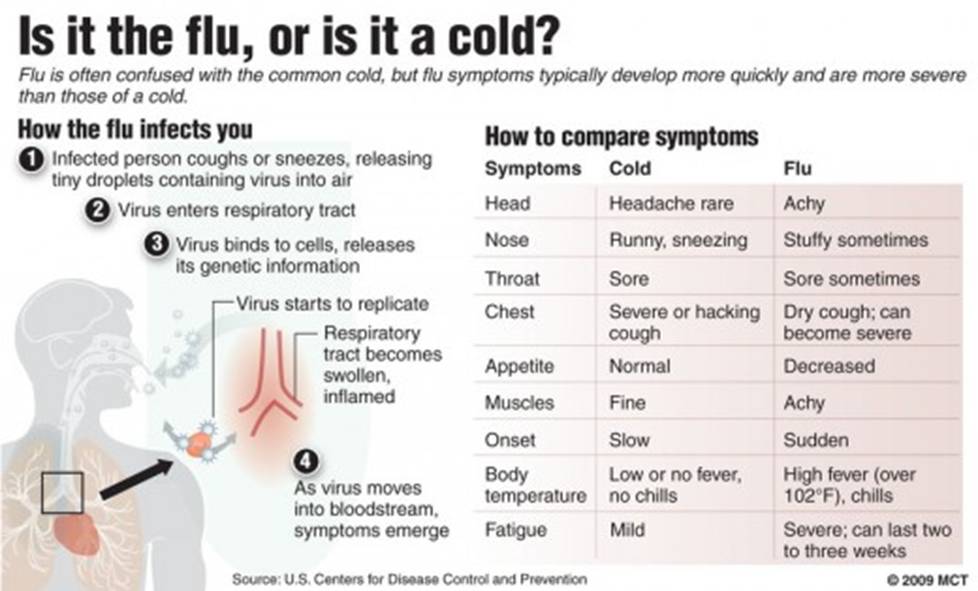
Infections causing a sore throat might result in other signs and symptoms, including:
- Fever
- Cough
- Runny nose
- Sneezing
- Body aches
- Headache
- Nausea or vomiting
When to see a doctor
Take your child to a doctor if your child’s sore throat doesn’t go away with the first drink in the morning, recommends the American Academy of Pediatrics.
Get immediate care if your child has severe signs and symptoms such as:
- Difficulty breathing
- Difficulty swallowing
- Unusual drooling, which might indicate an inability to swallow
If you’re an adult, see your doctor if you have a sore throat and any of the following associated problems, according to the American Academy of Otolaryngology — Head and Neck Surgery:
- A sore throat that is severe or lasts longer than a week
- Difficulty swallowing
- Difficulty breathing
- Difficulty opening your mouth
- Joint pain
- Earache
- Rash
- Fever higher than 101 F (38.
 3 C)
3 C) - Blood in your saliva or phlegm
- Frequently recurring sore throats
- A lump in your neck
- Hoarseness lasting more than two weeks
- Swelling in your neck or face
Causes
Viruses that cause the common cold and the flu also cause most sore throats. Less often, bacterial infections cause sore throats.
Viral infections
Viral illnesses that cause a sore throat include:
- Common cold
- Flu (influenza)
- Mono (mononucleosis)
- Measles
- Chickenpox
- Coronavirus disease 2019 (COVID-19)
- Croup — a common childhood illness characterized by a harsh, barking cough
Bacterial infections
Many bacterial infections can cause a sore throat. The most common is Streptococcus pyogenes (group A streptococcus) which causes strep throat.
Other causes
Other causes of a sore throat include:
- Allergies.
 Allergies to pet dander, molds, dust and pollen can cause a sore throat. The problem may be complicated by postnasal drip, which can irritate and inflame the throat.
Allergies to pet dander, molds, dust and pollen can cause a sore throat. The problem may be complicated by postnasal drip, which can irritate and inflame the throat. - Dryness. Dry indoor air can make your throat feel rough and scratchy. Breathing through your mouth — often because of chronic nasal congestion — also can cause a dry, sore throat.
- Irritants. Outdoor air pollution and indoor pollution such as tobacco smoke or chemicals can cause a chronic sore throat. Chewing tobacco, drinking alcohol and eating spicy foods also can irritate your throat.
- Muscle strain. You can strain muscles in your throat by yelling, talking loudly or talking for long periods without rest.
Gastroesophageal reflux disease (GERD). GERD is a digestive system disorder in which stomach acids back up in the food pipe (esophagus).
Other signs or symptoms may include heartburn, hoarseness, regurgitation of stomach contents and the sensation of a lump in your throat.

HIV infection. A sore throat and other flu-like symptoms sometimes appear early after someone is infected with HIV.
Also, someone who is HIV-positive might have a chronic or recurring sore throat due to a fungal infection called oral thrush or due to a viral infection called cytomegalovirus (CMV), which can be serious in people with compromised immune systems.
- Tumors. Cancerous tumors of the throat, tongue or voice box (larynx) can cause a sore throat. Other signs or symptoms may include hoarseness, difficulty swallowing, noisy breathing, a lump in the neck, and blood in saliva or phlegm.
Rarely, an infected area of tissue (abscess) in the throat or swelling of the small cartilage “lid” that covers the windpipe (epiglottitis) can cause a sore throat. Both can block the airway, creating a medical emergency.
Risk factors
Although anyone can get a sore throat, some factors make you more susceptible, including:
- Age.
 Children and teens are most likely to develop sore throats. Children ages 3 to 15 are also more likely to have strep throat, the most common bacterial infection associated with a sore throat.
Children and teens are most likely to develop sore throats. Children ages 3 to 15 are also more likely to have strep throat, the most common bacterial infection associated with a sore throat. - Exposure to tobacco smoke. Smoking and secondhand smoke can irritate the throat. The use of tobacco products also increases the risk of cancers of the mouth, throat and voice box.
- Allergies. Seasonal allergies or ongoing allergic reactions to dust, molds or pet dander make developing a sore throat more likely.
- Exposure to chemical irritants. Particles in the air from burning fossil fuels and common household chemicals can cause throat irritation.
- Chronic or frequent sinus infections. Drainage from your nose can irritate your throat or spread infection.
- Close quarters. Viral and bacterial infections spread easily anywhere people gather, whether in child care centers, classrooms, offices or airplanes.
- Weakened immunity.
 You’re more susceptible to infections in general if your resistance is low. Common causes of lowered immunity include HIV, diabetes, treatment with steroids or chemotherapy drugs, stress, fatigue, and poor diet.
You’re more susceptible to infections in general if your resistance is low. Common causes of lowered immunity include HIV, diabetes, treatment with steroids or chemotherapy drugs, stress, fatigue, and poor diet.
Prevention
The best way to prevent sore throats is to avoid the germs that cause them and practice good hygiene. Follow these tips and teach your child to do the same:
- Wash your hands thoroughly and frequently for at least 20 seconds, especially after using the toilet, before and after eating, and after sneezing or coughing.
- Avoid touching your face. Avoid touching your eyes, nose or mouth.
- Avoid sharing food, drinking glasses or utensils.
- Cough or sneeze into a tissue and throw it away, and then wash your hands. When necessary, sneeze into your elbow.
- Use alcohol-based hand sanitizers as an alternative to washing hands when soap and water aren’t available.

- Avoid touching public phones or drinking fountains with your mouth.
- Regularly clean and disinfect phones, doorknobs, light switches, remotes and computer keyboards. When you travel, clean phones, light switches and remotes in your hotel room.
- Avoid close contact with people who are sick or have symptoms.
types, symptoms, pathogens and diagnostic methods
Content
- 1 Types of throat infections: classification, symptoms, pathogens and diagnostic methods
- 1.1 Throat infections: types, symptoms, diagnostic methods
- 1.1.1 Types of throat infections 9001 0
- 1.1.2 Symptoms of throat infections
- 1.1.3 Diagnostic methods
- 1.2 Throat infections: what is it?
- 1.3 Symptoms of throat infections
- 1.4 Classification of throat infections
- 1.5 Types of throat infections
- 1.6 Causes of throat infections
- 1.7 Diagnosis of throat infections
- 1.
 8 Differential diagnosis of throat infections
8 Differential diagnosis of throat infections - 1.9 Complications of throat infections
- 1.10.1 Antibiotics
- 1.10.2 Antivirals
- 1.10.3 Cough and sore throat remedies
- 1.10.4 Mustard, warm compresses
- 1.10.5 Ventilate and humidify the room
- 1.10.6 Prevention
900 05 1.10 Treatment of throat infections
- 1.1 Throat infections: types, symptoms, diagnostic methods
- 1.11 How to prevent throat infections?
- 1.12 Ways to prevent throat infections
- 1.13 Related videos:
- 1.14 Q&A:
- 1.14.0.1 What types of throat infections can be identified?
- 1.14.0.2 What symptoms may indicate a throat infection?
- 1.14.0.3 What pathogens cause angina?
- 1.14.0.4 How are throat infections diagnosed?
- 1.14.0.5 What is pharyngitis and how is it treated?
- 1.14.0.6 How to prevent throat infections?
The article describes the classification of throat infections: types, symptoms, pathogens and diagnostic methods. Learn how to correctly identify an infection and how to treat it.
Learn how to correctly identify an infection and how to treat it.
Throat infections are common diseases of the upper respiratory tract. They present with various symptoms such as pain when swallowing, coughing, runny nose, and nasal discharge.
The classification of throat infections is based on the mechanism of development and the causes of the disease: infectious diseases can be caused by bacteria or viruses. Depending on this, treatment and diagnosis will differ.
A variety of methods are used to diagnose throat infections, including a physical examination, blood and throat tests, and the use of equipment such as endoscopes. Early diagnosis and timely treatment will help prevent complications and shorten the period of the disease.
The purpose of this article is to review the characteristics of various throat infections, the types of symptoms they cause, and methods of diagnosis and treatment.
Throat infections: types, symptoms, diagnostic methods
Types of throat infections
Throat infections are divided into several types, depending on the pathogen. One of the most common types is a viral infection that causes a cold or flu. Another popular type is bacterial infections such as sore throat, sore throat or pharyngitis. In rare cases, the throat may be affected by a fungal infection that causes throat thrush.
One of the most common types is a viral infection that causes a cold or flu. Another popular type is bacterial infections such as sore throat, sore throat or pharyngitis. In rare cases, the throat may be affected by a fungal infection that causes throat thrush.
Symptoms of throat infections
Symptoms of throat infections may vary depending on the type of infection. However, common symptoms are sore throat, cough, scattered voice, difficulty swallowing, and white patches on the back of the throat. Patients with a bacterial infection may also experience fever, headache, and muscle pain.
Diagnosis methods
To diagnose a throat infection, the doctor examines the throat, looking for spots and swellings in the throat, and takes material for analysis. For greater accuracy, the doctor can use laboratory diagnostics based on microscopic and bacteriological examination methods.
In conclusion, the proper treatment of throat infections requires an accurate diagnosis based on symptoms and test results./strep-throat-symptoms-5ae1f28aeb97de003955dcd2.png)
Throat infections: what is it?
Throat infections are diseases that affect the lining of the throat, usually caused by bacteria or viruses. They can lead to pain or irritation in the throat, more serious diseases such as sore throat, pharyngitis or laryngitis.
Throat infections can be caused by a variety of bacteria (eg, streptococci) and viruses (eg, influenza, common cold). Establishing a diagnosis of a throat infection may require a thorough examination by a doctor and sometimes additional laboratory tests.
Treatment for throat infections can include both drugs and non-drug treatments, from simple home remedies such as a hot drink or saline gargle to antibiotics and other drugs. In some cases, hospitalization and specialized treatment may be required.
Symptoms of throat infections
Sore throat and difficulty swallowing – usually the first signs of throat infections. Pain can be mild or severe, acute or chronic. Difficulty swallowing can lead to loss of appetite and dehydration.
Difficulty swallowing can lead to loss of appetite and dehydration.
Cough is one of the most common symptoms of a throat infection. The cough may be dry or mucus, prolonged or short-term. Cough can be caused by various pathogens, including viruses, bacteria, and fungi.
Fever is another of the most common symptoms of throat infections. The fever may be mild or severe and may be accompanied by other symptoms such as weakness, headache, and loss of appetite.
Swelling of the lymph nodes – possible with a number of throat infections, especially in children. Lymph nodes in the neck may be tender and enlarged, indicating that the body is fighting an infection.
Sensation of a lump in the throat or peeling – this sensation may result from irritation of the throat with an infection. They may not cause pain, but they can still be very uncomfortable and interfere with normal daily activities such as swallowing and talking.
Classification of throat infections
Throat infections can be caused by various pathogens such as bacteria, viruses, fungi or parasites. Depending on the pathogen, throat infections are divided into several types:
- Viral throat infections – are caused by viruses and are the most common. They are accompanied by a burning pain syndrome, runny nose, cough, eye pain and headache.
- Bacterial throat infections – caused by bacteria and can lead to a purulent infection. These include diseases such as tonsillitis, streptococcal pharyngitis, etc.
- Fungal infections of the throat – are caused by fungi and lead to the appearance of a white coating on the tongue and throat mucosa.
- Parasitic infections of the throat – Caused by parasites and manifested as itchy throat, swelling and pain when swallowing.
For a correct diagnosis of throat infections, it is necessary to consult an otorhinolaryngologist, who will perform an examination and possibly order laboratory tests (eg bacteriological cultures). After a diagnosis based on the type and severity of the infection, a doctor may prescribe specific treatment, such as antiviral or antibacterial drugs, antifungals, or antiparasitic drugs.
After a diagnosis based on the type and severity of the infection, a doctor may prescribe specific treatment, such as antiviral or antibacterial drugs, antifungals, or antiparasitic drugs.
Types of throat infections
Throat infections are a group of diseases that cause inflammation in the throat area. They can be caused by viruses, bacteria, or fungi. Different types of throat infections have unique symptoms and pathogens and require different methods of diagnosis and treatment.
- Pharyngitis is an inflammation of the back of the throat. It can be caused by both viruses and bacteria. Symptoms include: sore throat, cough, fever, and body aches.
- Laryngitis is an inflammation of the vocal cords that is often caused by viruses. It can cause hoarseness or loss of voice, discomfort, and soreness in the throat.
- Angina is an acute bacterial inflammation of the tonsils often caused by group A streptococci.
 Symptoms include: inflammation of the tonsils, white spots on the tonsils, sore throat, fever, and headache.
Symptoms include: inflammation of the tonsils, white spots on the tonsils, sore throat, fever, and headache.
For a correct diagnosis of throat infections, it is necessary to consult a doctor. They may perform a physical examination, take samples for laboratory testing to identify the causative agent and prescribe appropriate treatment.
Throat infections
Throat infections can be caused by various types of viruses and bacteria. Some of them often lead to painful symptoms such as throat and nasopharynx and compromise overall health.
Streptococcal throat infection is caused by the bacterium Streptococcus pyogenes and can lead to purulent sore throat, high fever, headache and severe sore throat.
The influenza virus can also cause sore throat, which may cause burning and fever.
The cold virus can cause sore throat and nasopharyngeal symptoms that can last for several days.
Whooping cough bacteria Bordetella pertussis causes a severe cough attack and painful symptoms in the throat.
Throat infections are diagnosed by a doctor examining the throat and performing laboratory tests.
Pathogen Symptoms
| Streptococcus pyogenes0208 | |
| Flu virus | Burning throat, fever |
| Cold virus | Sore throat and nasopharynx |
| Severe cough attack, sore throat symptoms |
Diagnosis of throat infections
The diagnosis of throat infections is an important step in determining treatment, as different types of infections require a different approach. The methods described below help to identify the causative agent of the disease and choose the right treatment.
- Physical exam : doctor checks pharynx, tonsils, back of throat, and body temperature.
 This allows you to assess the presence of inflammatory processes in the throat and determine the degree of their severity.
This allows you to assess the presence of inflammatory processes in the throat and determine the degree of their severity. - Blood test : complete blood test shows the presence of inflammation in the body, as well as its possible reduction after treatment.
- Microbiological tests : determination of the type of pathogen is carried out by inoculation of isolated bacteria in the laboratory. This allows you to choose the most effective antibacterial drug.
- Immunological tests : determination of the presence of a specific antibody to a specific infectious agent helps to establish an accurate diagnosis and choose the appropriate treatment.
Your doctor may also order other tests, depending on the symptoms and severity of the disease. It is important to see a doctor at the first sign of a throat infection for timely diagnosis and treatment.
Differential diagnosis of throat infections
Throat infections are diseases that cause inflammation of the throat and surrounding tissues.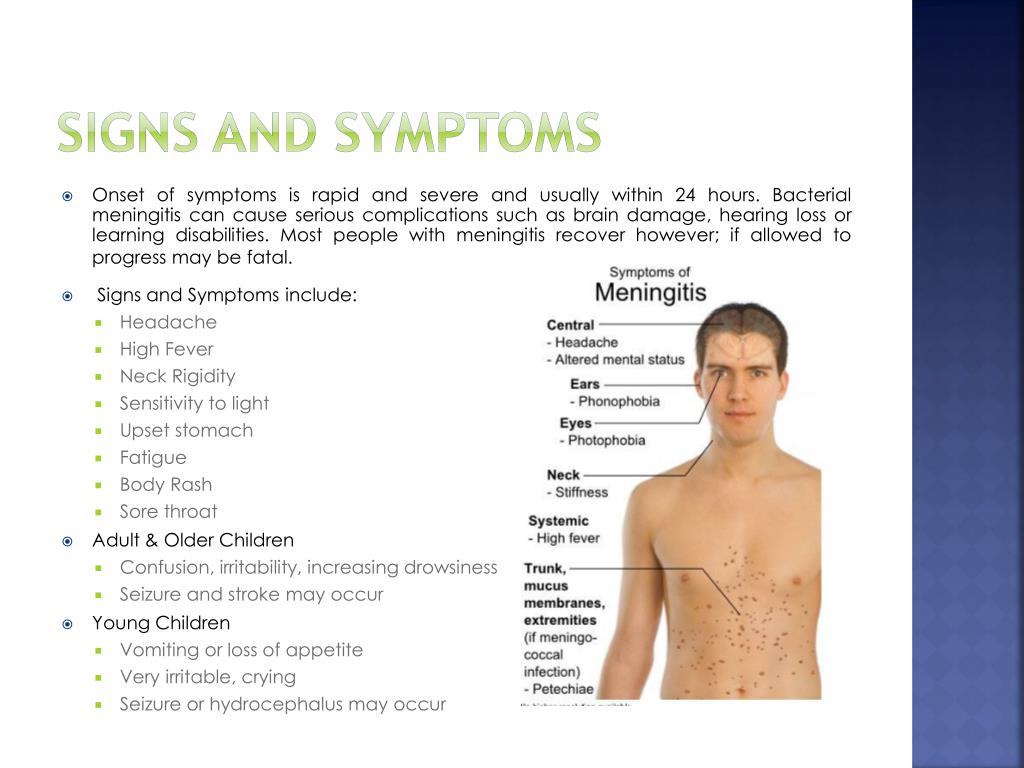 Differential diagnosis of these infections is based on the nature of the symptoms, the type of pathogen and the results of laboratory tests.
Differential diagnosis of these infections is based on the nature of the symptoms, the type of pathogen and the results of laboratory tests.
Viral throat infections often begin with a runny nose and sore throat accompanied by a cough. They often cause headache, weakness and fatigue. Enlarged lymph nodes are a common symptom of viral infections. The viruses that cause this infection can be found in biopsy specimens and sputum.
Bacterial infections of the throat begin with a significant increase in body temperature, sore throat, which then spread to the ear. Bacterial throat infections also often cause headaches, nausea, and vomiting. Bacteria can be detected using biopsy specimens or sputum.
- Streptococcal angina is a bacterial infection caused by streptococcus.
- Diphtheria is a bacterial infection caused by the bacteria Corynebacterium diphtheriae.
- Candidiasis of the throat is a fungal infection caused by Candida albicans.

Acute pharyngitis is a common throat condition that can be caused by either a viral or bacterial infection. Symptoms include sore throat, runny nose and cough. To determine the type of infection, it is necessary to conduct laboratory tests.
Complications of throat infections
Peritonsillar abscess is an acute purulent inflammation of the tissues of the pharynx, which is a severe complication of angina. Symptoms are severe pain in the throat, lack of appetite, fever, and possible breathing problems. Diagnosis requires computed tomography or ultrasound.
Epiglottitis is a severe, acute throat infection that causes redness, inflammation, and swelling of the larynx and epiglottis. Symptoms include severe difficulty breathing, loud and noisy exhalation, severe pain when swallowing, and elevated body temperature. X-rays and laboratory tests are used for diagnosis.
Reactive arthritis is a rare complication of purulent throat infections that can lead to inflammation of the joints and other tissues. Symptoms may include joint and muscle pain, fever, and general symptoms of a throat infection. For diagnosis, laboratory tests and examination of the joints are carried out.
Symptoms may include joint and muscle pain, fever, and general symptoms of a throat infection. For diagnosis, laboratory tests and examination of the joints are carried out.
- Reactive mononucleosis is a severe complication of throat infections that can lead to inflammation of the spleen, liver, and other internal organs. Symptoms include high body temperature, severe headaches, sudden deterioration in health. For diagnosis, laboratory tests and examination of internal organs are used.
Treatment of throat infections
Antibiotics
In the case of a bacterial infection of the throat, a course of antibiotics may be prescribed. Their choice depends on the causative agent of the disease, its sensitivity to different drugs and the age of the patient.
Antibiotics should be taken exactly as directed and recommended by your doctor. If the dosage regimen is observed, usually after a few days, relief of the condition and a decrease in temperature are noticeable.
Antivirals
In case of a viral throat infection, antivirals are used. They can shorten the duration of illness and reduce the severity of symptoms, but it must be borne in mind that the effectiveness of such drugs depends on the time they are taken and the types of viral pathogens.
Cough and sore throat remedies
Syrups, solutions, lozenges, tablets containing various active ingredients can be used to alleviate severe coughs and sore throats. Some of them may have an anti-inflammatory and relaxing effect, such as eucalyptus oil, menthol, salicylates, lysozyme.
Mustard, warm compresses
If the disease is not accompanied by high fever, various mustard and warm compresses can be applied to the throat, chest and back. They can help relax muscles, make breathing easier, improve circulation, and reduce swelling.
Ventilate and humidify the room
In addition to medical treatment, it is important not to forget about simple measures that can help speed up recovery.:max_bytes(150000):strip_icc()/overview-of-strep-throat-1191987_final-21489a625c774930abb4a3c12e13b0a6.png) In particular, it is necessary to regularly ventilate the room and ensure sufficient air humidity, for example, using humidifiers.
In particular, it is necessary to regularly ventilate the room and ensure sufficient air humidity, for example, using humidifiers.
Prevention
To avoid recurrent infections of the throat, it is necessary to maintain good personal hygiene, avoid contact with the sick, smoke less or not at all, strengthen the immune system through proper nutrition, exercise and avoiding bad habits. In case of frequent recurrences of throat infections, you should consult a doctor for additional examination and special treatment.
How to prevent throat infections?
Throat infections occur when microorganisms enter the throat and begin to multiply, causing inflammation. To prevent throat infections, you need to take some precautions.
- Wash your hands frequently. Washing your hands regularly helps reduce the risk of contracting viruses or bacteria.
- Avoid contact with people who are sick. If the person has a throat infection, ask them to wear a mask or limit contact.

- Do not share personal items. Do not share a toothbrush, towel, or glass with someone who has a throat infection.
- Eat right. Foods rich in vitamins and minerals help maintain a healthy immune system.
Remember that prevention is better than cure. If you feel the first symptoms of a throat infection, see your doctor and start treatment as soon as possible. Do not self-medicate, it can worsen your condition.
Ways to prevent a throat infection
1. Practice good hygiene
Throat infections are most often transmitted through airborne droplets and contact with infected objects. To avoid infection, follow the rules of hygiene: wash your hands regularly, avoid contact with sick people, do not use other people’s items for food and drink.
2. Strengthen your immune system
A strong immune system helps the body fight infections. To strengthen it, exercise regularly, eat right, drink water and avoid stress.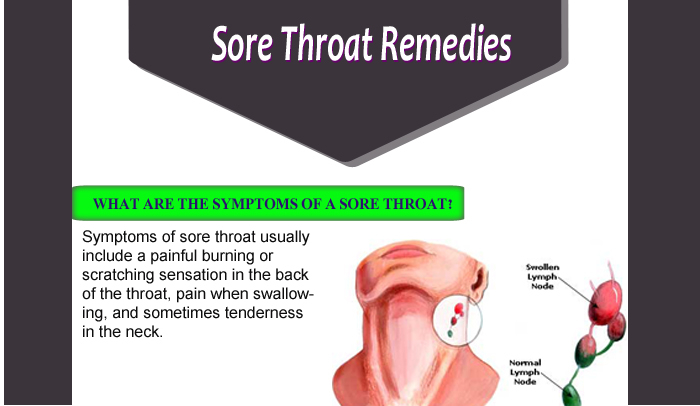
3. Avoid cold and heat
Cold and heat weaken the body and can lead to throat infections. Therefore, keep an eye on the temperature in the room and when communicating outside, do not forget to wear clothes suitable for the weather.
4. Ventilate the room regularly
Ventilate the room regularly to prevent the accumulation of harmful microorganisms in the room. This will not only help to avoid getting a throat infection, but also improve the air quality in the room.
5. Take care of your health
If you have symptoms of a throat infection or other illness, contact your doctor immediately. Timely treatment will help to avoid complications and return to normal life faster.
Related videos:
Q&A:
What types of throat infections can be distinguished?
Depending on the pathogen, infections caused by bacteria (for example, tonsillitis, pharyngitis), viruses (SARS, influenza), fungi (candidiasis stomatitis), as well as infections caused by a combination of these pathogens can be distinguished.
What symptoms might indicate a throat infection?
The most characteristic symptoms include pain when swallowing, fever, cough, plaque on the tongue and tonsils, itching and burning in the throat, and general well-being.
What pathogens cause angina?
Angina is most commonly caused by group A streptococci. Less commonly, staphylococci, pneumococci and Haemophilus influenzae can be pathogens.
How are throat infections diagnosed?
To diagnose a bacterial infection of the throat, a bacteriological examination of a swab from the tonsils is necessary. To diagnose viral infections, such as SARS or influenza, a general blood test and / or PCR diagnostics is sufficient. Candidal stomatitis is diagnosed by smear microscopy and bacteriological culture.
What is pharyngitis and how is it treated?
Pharyngitis is an inflammation of the back of the throat. Treatment of pharyngitis depends on its form and the causative agent of the infection.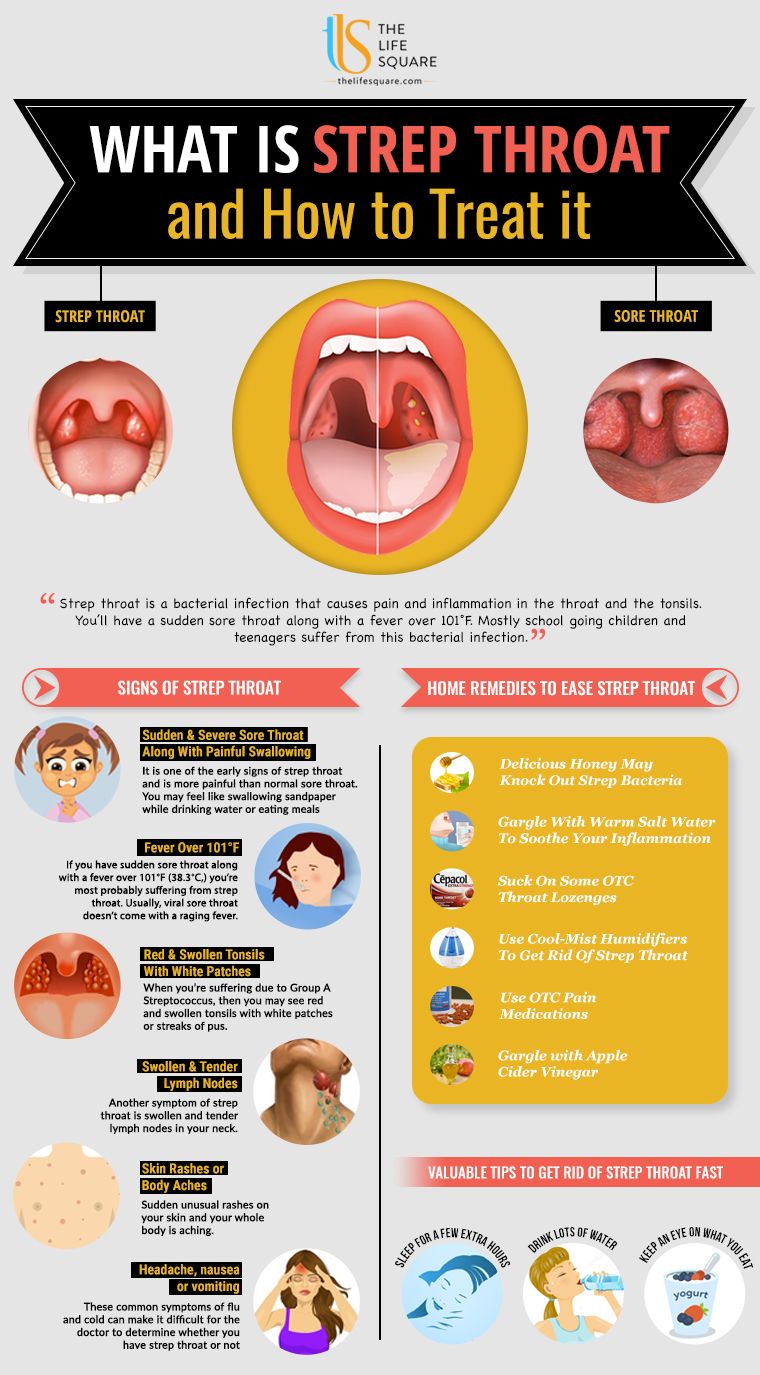 In the case of a bacterial infection, antibiotics are usually prescribed. Hot drinks, gargles with antiseptics, and, if necessary, treatment of symptoms are also recommended.
In the case of a bacterial infection, antibiotics are usually prescribed. Hot drinks, gargles with antiseptics, and, if necessary, treatment of symptoms are also recommended.
How to prevent throat infections?
To prevent throat infections, it is necessary to maintain oral hygiene, regularly ventilate rooms, avoid contact with sick people, strengthen immunity through proper nutrition and regular physical activity.
types, causes, symptoms, diagnosis, treatment
Be close to family and friends together Tantum ® Verde
Special for adults
Tantum Spray ® Verde Forte
- Reduces sore throat from 1 minute 5, 6, 7
- Penetrates into inflammation 7
- Effective against bacteria, viruses and fungi 1
- Maintains immunity 8
more details
Tantum Spray ® Verde
- Reduces sore throat from 1 minute 5, 6, 7
- Penetrates into inflammation 7
- Effective against bacteria, viruses and fungi 1
- Maintains immunity 8
- Suitable for adults and children from 3 years* 2
9 0456 more
Tantum Tablets ® Verde
- Reduces pain in the throat from the 1st minute 5, 6, 7
- Penetrates into the focus of inflammation 7
- Acts on bacteria, viruses and fungi 9042 5 1
- Total 3 tablets per day 5, 6, 7
more details
Pharyngitis sore throat.
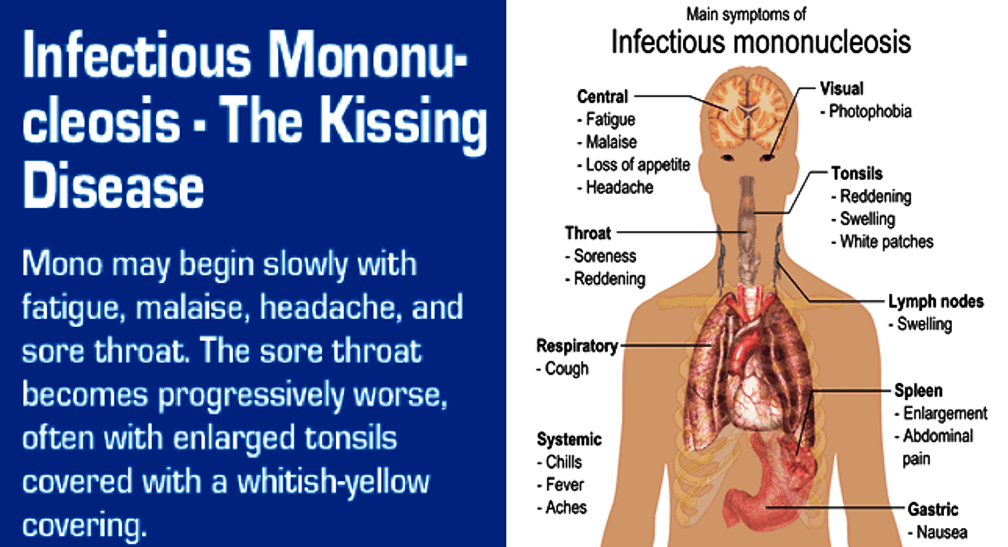 Often accompanied by pain when swallowing and hoarseness 10 .
Often accompanied by pain when swallowing and hoarseness 10 .
SARS
The most common infectious disease accompanied by runny nose, cough, sneezing and headache 11 .
Tonsillitis
Inflammation of the tonsils with sore throat, difficulty swallowing, high fever and headache 10 .
Laryngitis
Inflammation of the mucous membranes of the larynx. May be accompanied by hoarseness, difficulty swallowing, coughing and thick mucus in the throat 12 .
Uvulitis
Inflammation of the uvula. Usually accompanied by itching, burning or sore throat. May have difficulty swallowing and breathing 13 .
Strep throat
A bacterial infection that causes inflammation and sore throat. The main causative agent is group A streptococcus 10 .
Literature:
3. Instructions for medical use of Tantum
® Verde 3 mg Tablets
I.
 S. , Farikov S.E. Important nuances of the inflammatory process in the oropharynx and the choice of optimal treatment tactics. Medical Council No. 16, 2017.
S. , Farikov S.E. Important nuances of the inflammatory process in the oropharynx and the choice of optimal treatment tactics. Medical Council No. 16, 2017.
6. Lazareva N.B., Akhunov V.M. Influence of the severity of ARVI symptoms on the frequency of self-administration of antibacterial drugs in adult patients. Issues of quality assurance of medicines No. 4 (18) 2017.
7. Polyakova A.S., Bakradze M.D., Tatochenko V.K. “Treatment of viral tonsillitis” Farmateka. 2018; Pediatrics.
8. Poryadin G.V. et al. Mechanism of action of benzydamine on local inflammation, 2018 (in press).
9. Catic T, et al. Mater Sociomed 2018; 30(1): 43–48.
10. Harvard Health Publishing. Sore throat (Pharyngitis). Available at: https://www.health.harvard.edu/diseases-and-conditions/sore-throat-pharyngitis-a-to-z [Last accessed March 2021].
11. Eccles R. Lancet Infect Dis 2005; 5(11):718–25.
12. Renner B, et al.



 Cough and cold medicines can result in serious and sometimes life-threatening side effects in young children.
Cough and cold medicines can result in serious and sometimes life-threatening side effects in young children. 3 C)
3 C) Allergies to pet dander, molds, dust and pollen can cause a sore throat. The problem may be complicated by postnasal drip, which can irritate and inflame the throat.
Allergies to pet dander, molds, dust and pollen can cause a sore throat. The problem may be complicated by postnasal drip, which can irritate and inflame the throat.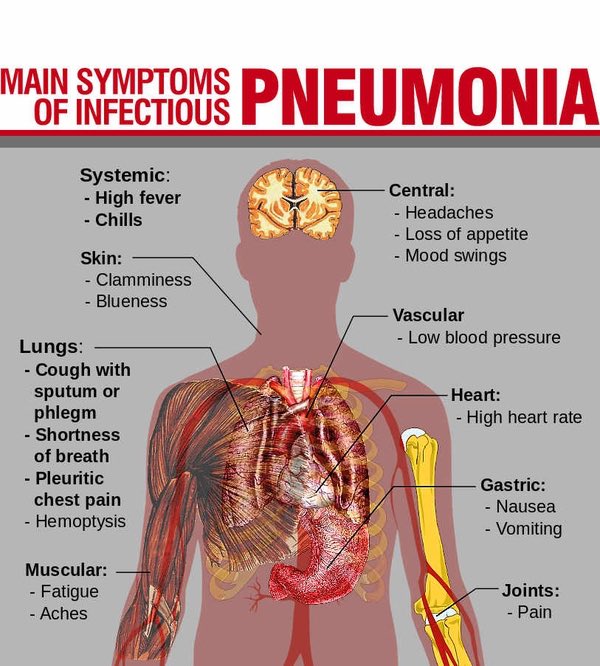
 Children and teens are most likely to develop sore throats. Children ages 3 to 15 are also more likely to have strep throat, the most common bacterial infection associated with a sore throat.
Children and teens are most likely to develop sore throats. Children ages 3 to 15 are also more likely to have strep throat, the most common bacterial infection associated with a sore throat. You’re more susceptible to infections in general if your resistance is low. Common causes of lowered immunity include HIV, diabetes, treatment with steroids or chemotherapy drugs, stress, fatigue, and poor diet.
You’re more susceptible to infections in general if your resistance is low. Common causes of lowered immunity include HIV, diabetes, treatment with steroids or chemotherapy drugs, stress, fatigue, and poor diet.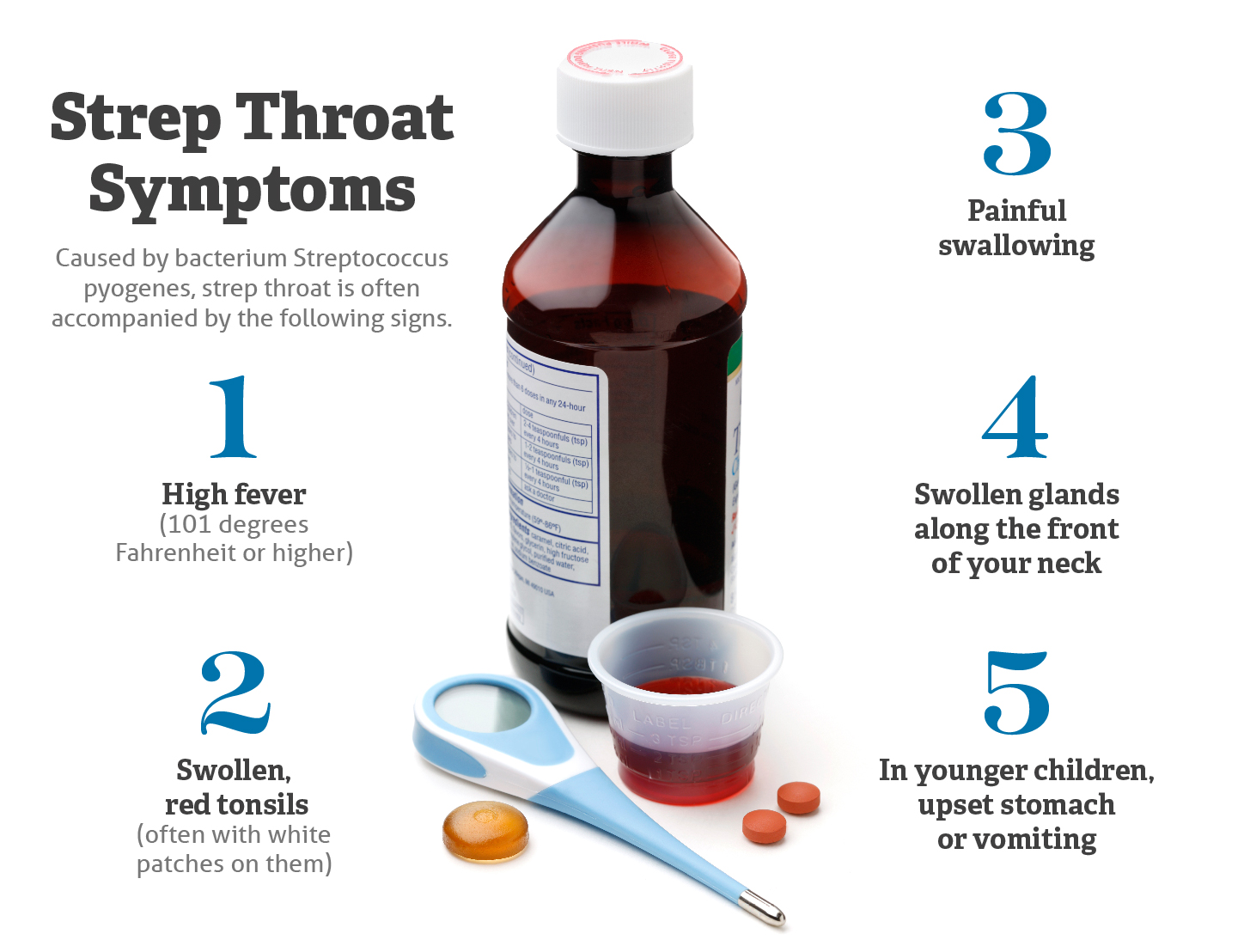
 8 Differential diagnosis of throat infections
8 Differential diagnosis of throat infections Symptoms include: inflammation of the tonsils, white spots on the tonsils, sore throat, fever, and headache.
Symptoms include: inflammation of the tonsils, white spots on the tonsils, sore throat, fever, and headache.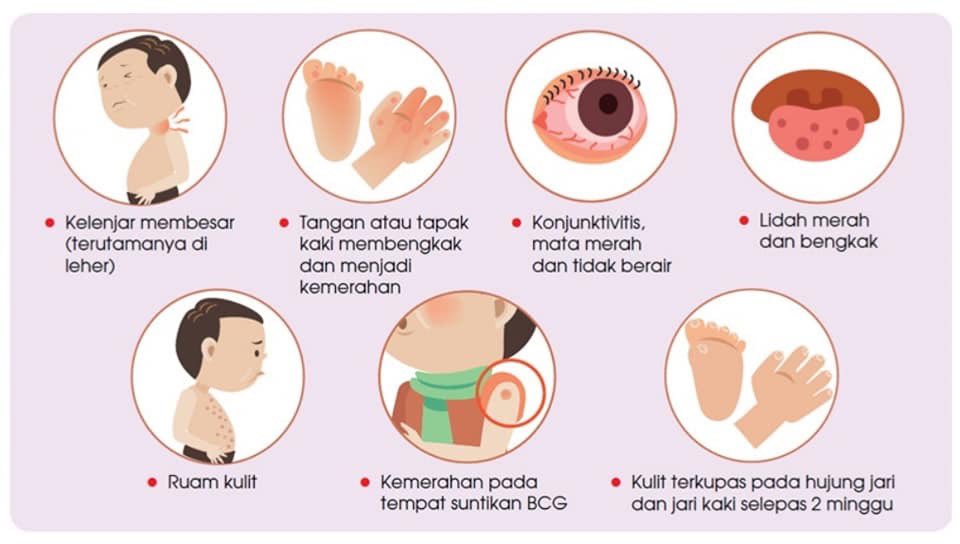 This allows you to assess the presence of inflammatory processes in the throat and determine the degree of their severity.
This allows you to assess the presence of inflammatory processes in the throat and determine the degree of their severity.
